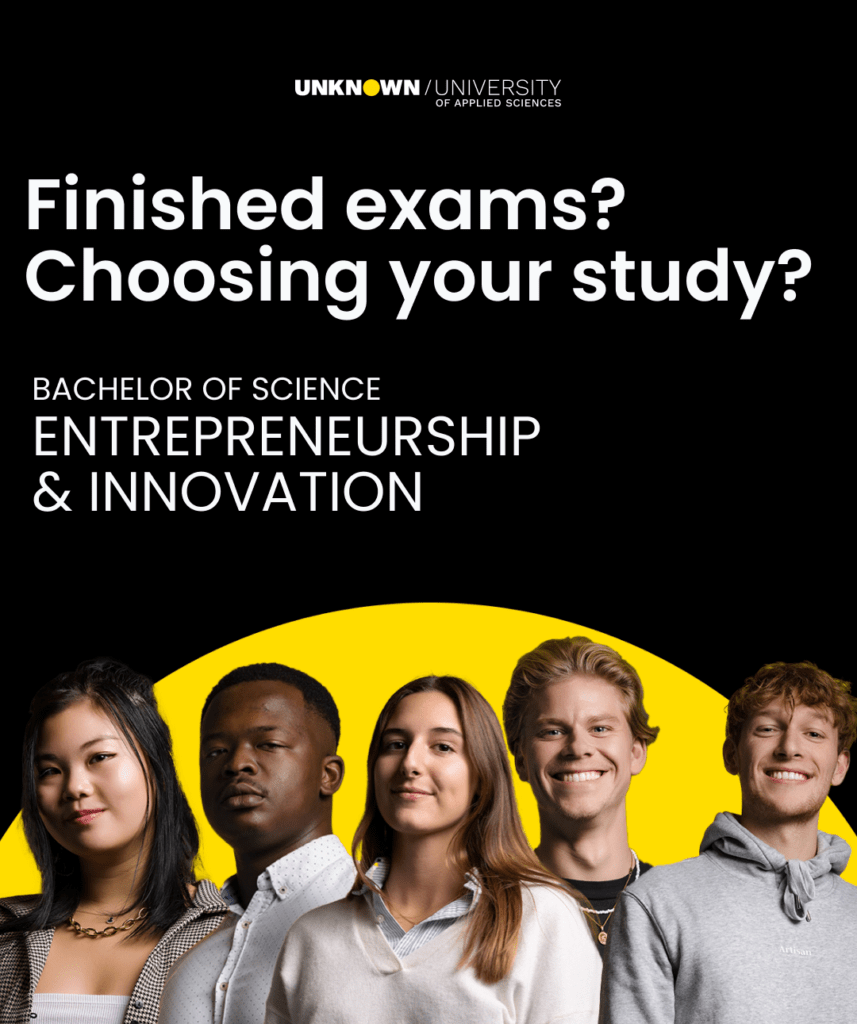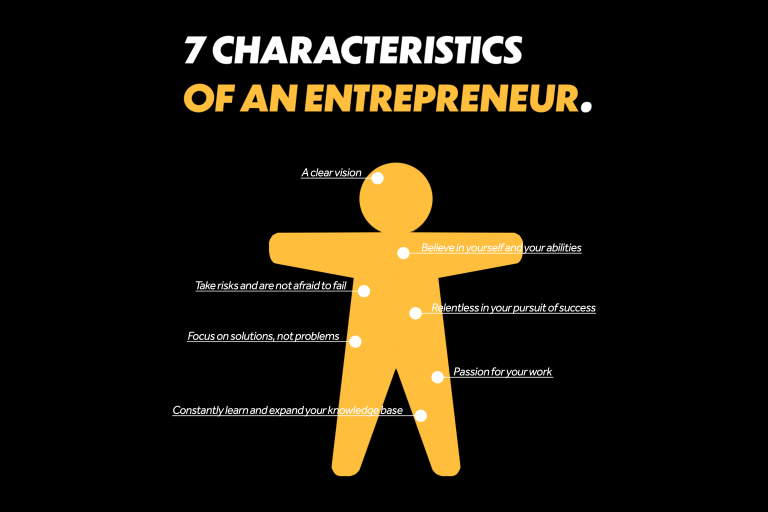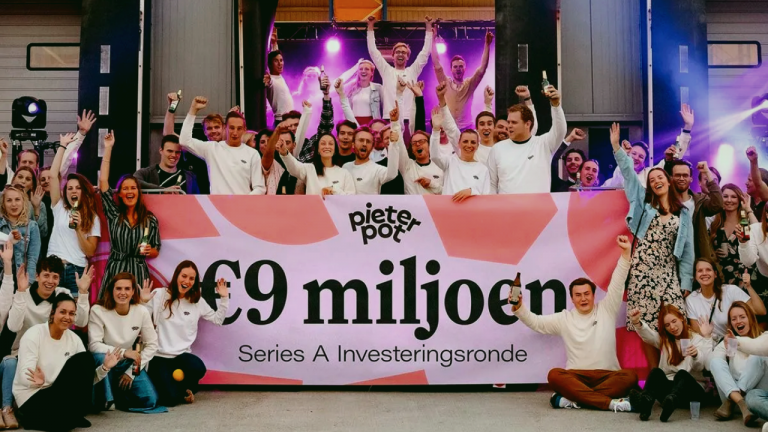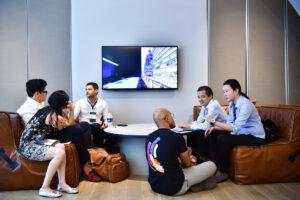As a business coach at Unknown University of Applied Sciences, Jeroen Coelen guides students along in their start-up journey, as he provides coaching opportunities where students can expect honest feedback, inspiration, and relevant advice. Jeroen uses his expertise in navigating the early stages of start-ups in order to inspire students to begin new ventures with confidence. With his blogs, Jeroen offers practical tips on developing problem-fit solutions, suggests ways to better understand your customers, and recommends frameworks that help make sense of the chaos of start-ups. We are lucky to host Jeroen’s blogs, as they provide unique insights regarding the nature of the start-up process, continue reading below.
What got you here, won’t get you there
Read in your best Michael Barbaro (The Daily, NYT) voice:
Today, Pieter Pot announced a €9 Million funding round. With their recent expansion to Belgium, they are now serving close to 40.000 customers.
Two years ago, this company almost died. What can we learn from this sustainable supermarket startup?
—
Pieter Pot is a package-free supermarket. They deliver their foods in glass jars which they pick up on their next delivery. Delivered in a typical Dutch bakfiets at your doorstep.
I’ve followed this startup from its inception, about 3 years ago, in the startup course, I teach.
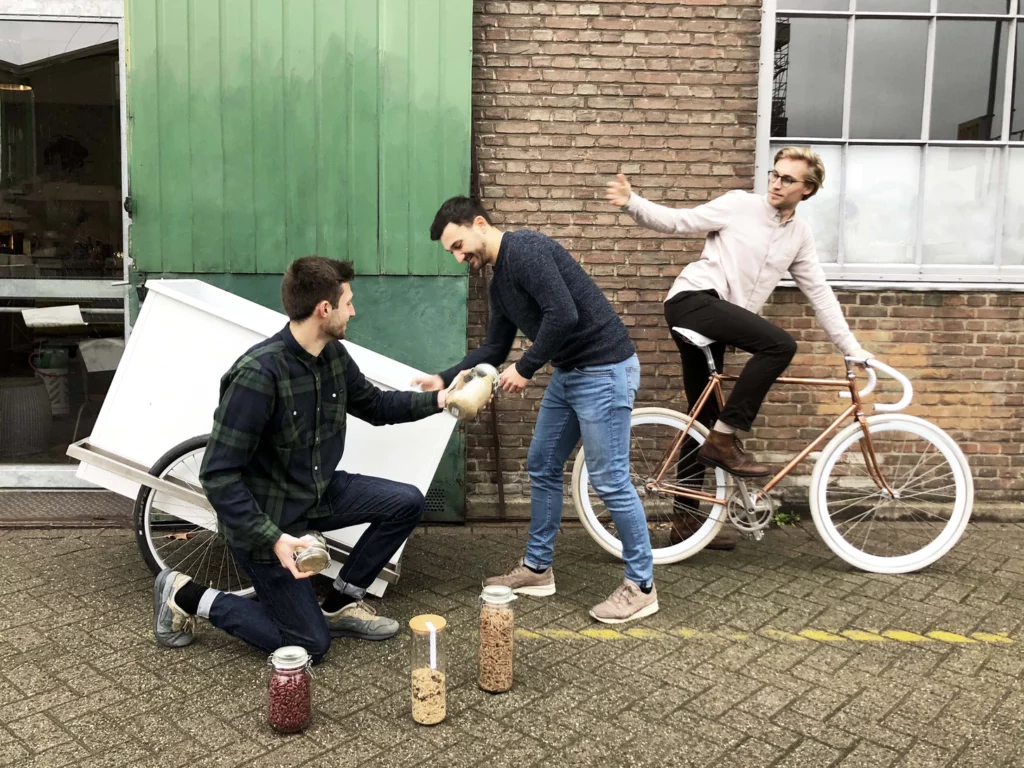
For my PhD research, I interviewed Jouri twice around that near-death experience. We know the outcome, but what caused it and how did they avoid the abyss?
the emergence of pieter pot
Pieter Pot started out as Puur Bezorgd. At inception, the team had 3 variations of the supermarket delivery idea.
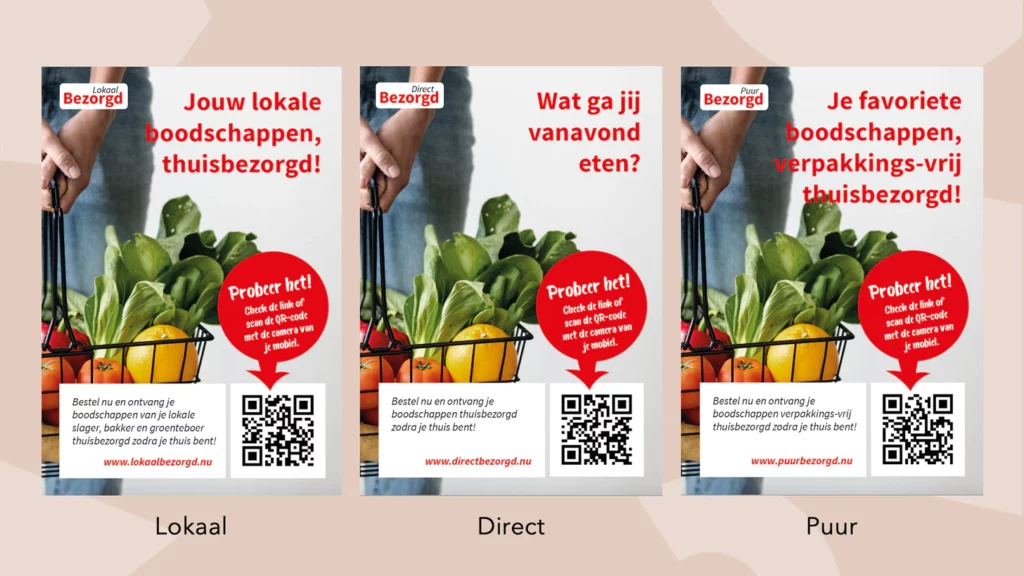
Loosely translated:
- ‘Local delivered’ – only local food
- ‘Direct delivered’ – delivery within 2 hours
- ‘Pure delivered’ – food in jars, no packages
They tested these propositions with flyers and Facebook ads to see which resonate the most. Pure Delivered (PuurBezorgd) had the most traction.
PuurBezorgd later rebranded to Pieter Pot.
They launched first in Rotterdam, the 2nd biggest city of The Netherlands. Their strategy was to, inspired by supermarket Picnic, conquer the Netherlands city by city.
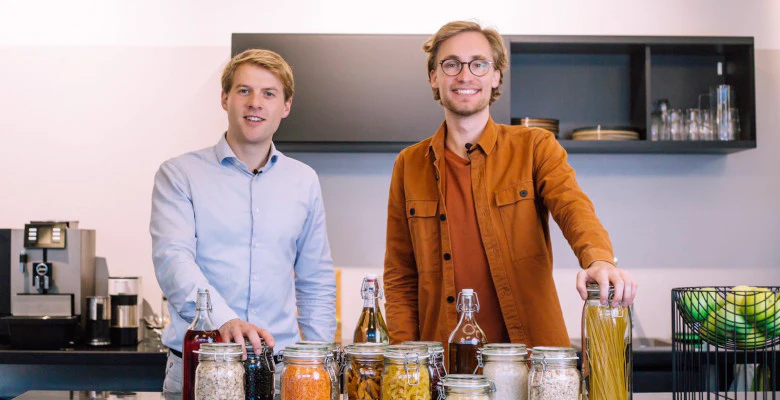
With ease, they grew to 50 customers in the first months. The great start made his co-founder Martijn quit his job and go full-time on Pieter Pot.
Within a couple of months, they reached over 250 customers.
But then the growth stopped, completely, Jouri tells me. They soon encountered three problems.
problem 1: growth halted due to suboptimal proposition
Their first reaction was to increase the spending on social media ads. People clicked on the ads, visits to the website were high, but the conversion to customers was very low. No new customers.
The 250 customers they had were extremely excited about their service. However, without new customers coming in, it seemed they reached a limit in Rotterdam.
In interviews with their customers, they found that a key reason not to order more was the limited assortment. They did mostly the dried goods such as pasta, muesli and coffee.
Jouri reflects that their proposition, the online package-free supermarket, wasn’t what they actually offered. They had a small subset of all supermarket supplies that go in your pantry.
Jouri offers a metaphor:
“We advertised a bicycle, but we only offered a crackie bicycle. The early adopters were fine with that crappy bicycle, because it was package free, but the masses didn’t want a crappy bicycle”
The flying start didn’t sustain, their proposition was not enough to conquer Rotterdam. As a result, the founding team entered a (mental) dip for a couple of months.
Martijn: “I want to make something out of this shithole we are now in”
PROBLEM 1: business case not break-even
What made things more complicated is that with just over 250 customers, the business was not profitable. Heck, it was in the reds. They calculated that they would’ve required 1500 customers to break even.
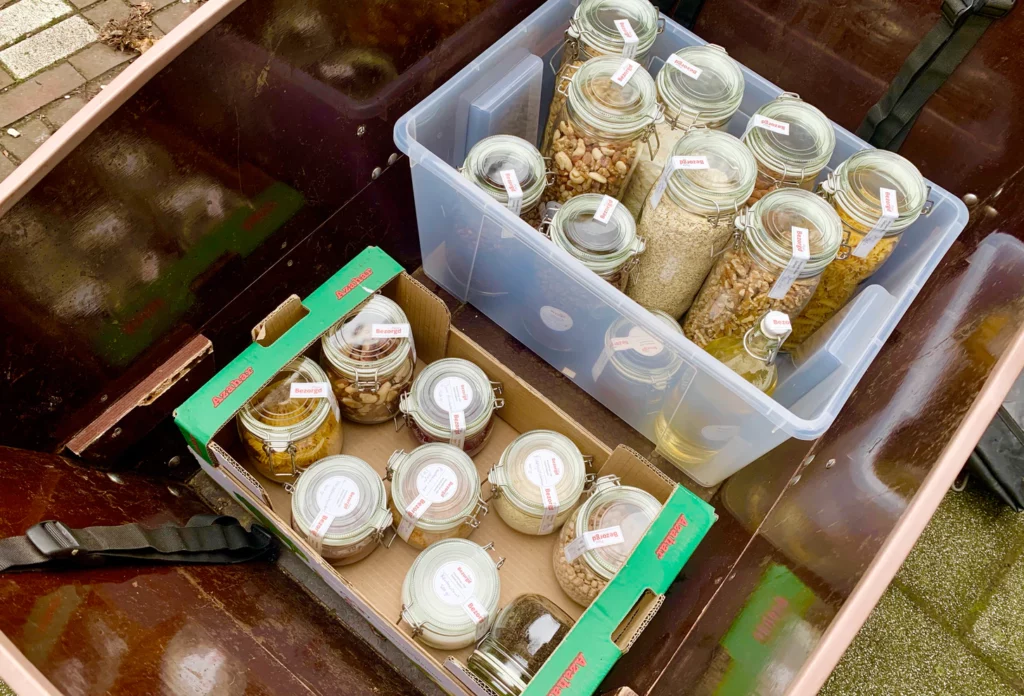
Little sidestep from me: Here you see that they understood their unit economics. This is hard to estimate from the start on the drawing board.
By executing, they learned the magic number is 1500 customers. The knowledge of the variables in these types of equations is extremely valuable. It requires experimentation.
Knowing what makes your business work financially is extremely important. It’s the viability, pur sang. How much do I need to sell to make a profit? What is the anatomy of that equation?
Getir founder Nazim Salur discoverd a magic number for the optimal amount of items in their store, coincidentally also 1500. They experiment with a wider offering and a more narrow, yet for him 1500 seems optimal. Listen to this podcast to learn more.
Meanwhile, the end of their runway was nearing. Newspeak for: running out of cash. They needed to grow to sustain themselves.
To grow, Pieter Pot wanted to expand to a new city and extend their offering, for which they needed capital.
PROBLEM 3: investors don’t like a leaky bucket
The founders turned to investors, but investors didn’t bite. The reasoning: You can’t make 1 city profitable, why would I invest in you starting in other cities?
Makes sense.
The young entrepreneurs considered crowdfunding for the next city. But with just a couple of potential hundred donors in any big city in the Netherlands, that amount would be about €5000, Jouri and I estimated in hindsight over Zoom.

That wouldn’t extend the runway long enough, it would not be enough for the expansion to another city.
Furthermore, “it didn’t feel right”, tells Jouri, to do crowdfunding for the next city when Rotterdam was not profitable yet.
waiting for an epiphany
They were truly stuck.
- Rotterdam wasn’t profitable
- With an expansion, they might become profitable
- For expansion, they needed capital
- For capital, they needed to be profitable.
There didn’t seem a way out from this catch 22.
All this, while their savings dried up and Jouri struggled with managing his Master thesis on the side. They needed to act amidst this trouble. Fast.
Martijn was extremely solution-oriented when Jouri’s problem-solving skills had a slump. He came up with various solutions, trying to break the boundaries of the thinking box.
A franchise model was one of them, inspired by his hairdresser. Still, who wants to franchise a negative business case? Not all ideas were good, but a stream of ideas is what you need, quantity over quality, maybe.
killing darlings
“What if we don’t deliver ourselves?”, Martijn suggested. It seemed that having delivery in-house made everything more complicated.
Jouri wasn’t too happy with this idea. He considered this one of their USPs. Something that allowed them to foster strong connections with their customers. It was part of their brand, they sometimes ran with the milkman narrative.
“Instead of the Pieter Pot experience you would get a mailman experience”
Jouri was hesitant. He felt that Picnic was able to conquer the market due to their personalised delivery.
A competitor of PicNic, Stockon, didn’t grow as fast and retired in 2019. Jouri felt the outsourced delivery was a cause of that. He was worried outsourcing the delivery would hurt his consumer’s experience.
KILLING DARLINGS embracing the only path forward
A hard decision. But the more they reflected, the more it became “the only way out”. Although hesitant, he played a thought experiment of the consequences of such a decision.
If they would outsource delivery, this would release a chain of conclusions, that unlocked the previously impossible strategies.
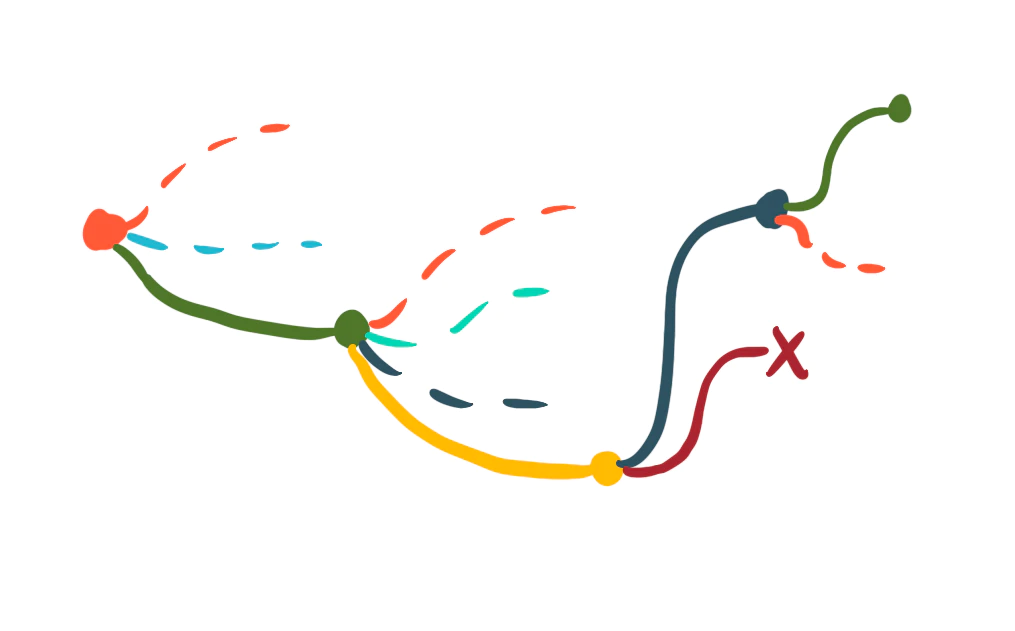
If the service is offered to the entirety of The Netherlands, they could crowdfund in the entire country, extending a runway substantially. They started to see crowdfunding not only as a runway extension, yet also as a validation step for the outsource-delivery proposition.
Furthermore, with outsourcing delivery, set-up costs per city will be lower. Not each city would require a warehouse and riders.
This makes it easier to break even: there must be 1500 people in The Netherlands that want their solution.
“This was an epiphany for me”, as Jouri retells.
It seemed a pivotal point in their startup.
I ask Jouri: “If it weren’t for outsourcing the delivery, would it have been very likely that Pieter Pot would’ve gone under?”
Jouri: “100%”, he responds coldly.
validating outsourced delivery
Jouri still was a little hesitant about the new experience for his customers. Before the crowdfunding, they tested the experience. It was an ethical concern for him.
At that point, they had 1000+ people on their waiting. They ran a pilot with 20 new customers throughout the entire country, rural and urban.
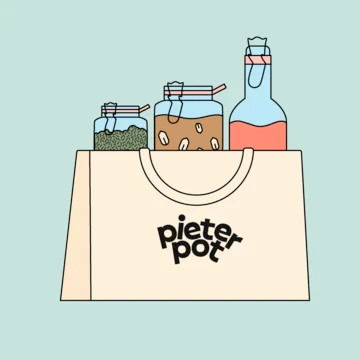
Customers were happy, and some initial bugs were found as some pots broke down with this new delivery option. One unusual variation was delivery with a coolbox. They learned a lot.
Most importantly, they learned that customers loved it. It seemed they didn’t care so much about the delivery.
This removed the hesitations of Jouri and they doubled down on this strategy. They partnered with PostNL food that could also pick up the empty jars.
Suddenly investable, times three
With this new strategy, they returned to the investors that first turned them down. Before, they asked for a ‘couple hundred grand’.
Now, they lowered their ask: Would you like to be on our board of advisors, in return for an angel investment? Skin in the game: check. That’s one.
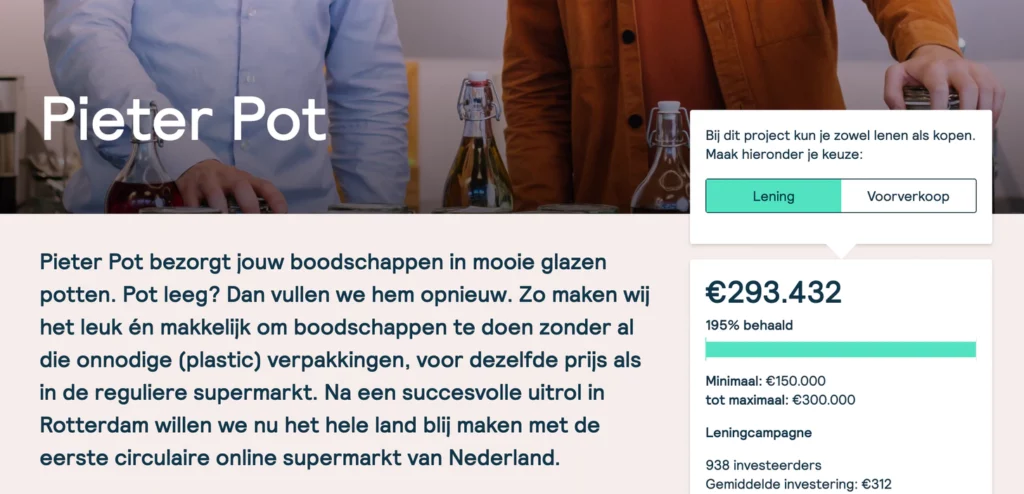
This smaller angel investment extended the runway long enough to set up and complete the crowdfunding. They raised €290.000 in their crowdfunding, 195% of their goal. That’s two.
There was a national subsidy that met their goals, which they also raised in this round. Capital raised, times three.
rolling out in the netherlands
With the capital in hand, they slowly started to roll out, city by city. Playful videos of Jouri delivering the first pots pop up on Instagram. Jouri leveraged local media for each city rollout, who were eager to write about them which brought in new customers.
Although they outsource the delivery, the bakfiets still functioned for setting their brand and proposition.
Soon, their waitlist doubled from 3.000 to 6.000. The pandemic helped a little.
When I interviewed Jouri for the second time just a couple of months later, it had jumped to 25.000. They had so many people waiting, they had the luxury to choose in which cities to launch. At this time, Pieter Pot had onboarded 2500 customers.
They’ve made it safe.
from almost gone to well done
Fast forward to today. They have over 30.000 customers. Rotterdam has over 3000 customers now. They recently launched in Belgium, obviously with the bakfiets promotional campaign.
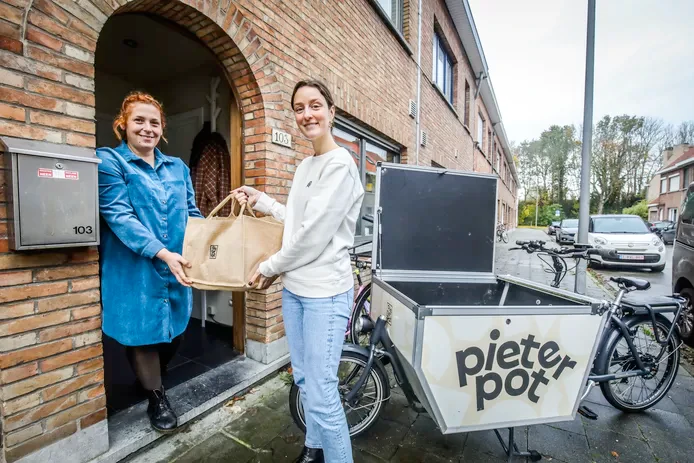
Today they announced a 9 Million funding round to conquer the rest of Europe. They have some interesting challenges ahead, but that’s a different story.
At the worst moment, the runway was at most a couple of months long. They were in a catch 22.
“What got you here, won’t get you there” – Marshall Goldsmidt
Some of the core assumptions needed revisiting. There was only one option. That option seemed to be a lifesaver.
“It’s different to start a fire than to keep a fire going” – Des Traynor
Getting traction is hard. But in theory, everything should be up for discussion. Although we seem to cling to what helped us before, logically.
ubereats failed similarly
I’ve heard about a similar story in UberEats. They held on to the vision of their cab services success when launching UberEats.
Uber had a ‘cab in 10 minutes’ vision, which they applied on UberEats. Food in 10 minutes, delivered at your doorstep.
They partnered with restaurants that would prepare the food in the low hours after lunch but before dinner. These would be kept hot using heating bags which were put in the passenger’s seat.
Presto: Hot food in 10 minutes.
It didn’t get traction. That vision complicated logistics so much and made the food of suboptimal quality. Retention was very bad.
They even leveraged their existing taxi Uber app to drive traffic by showing ads for UberEats there. Can you imagine the significance of the numbers?
Only after rolling out in 15 cities, the board pulled the plug. Turns out, we are okay with waiting for more than 10 minutes for food. And again, we know the rest of the story.


